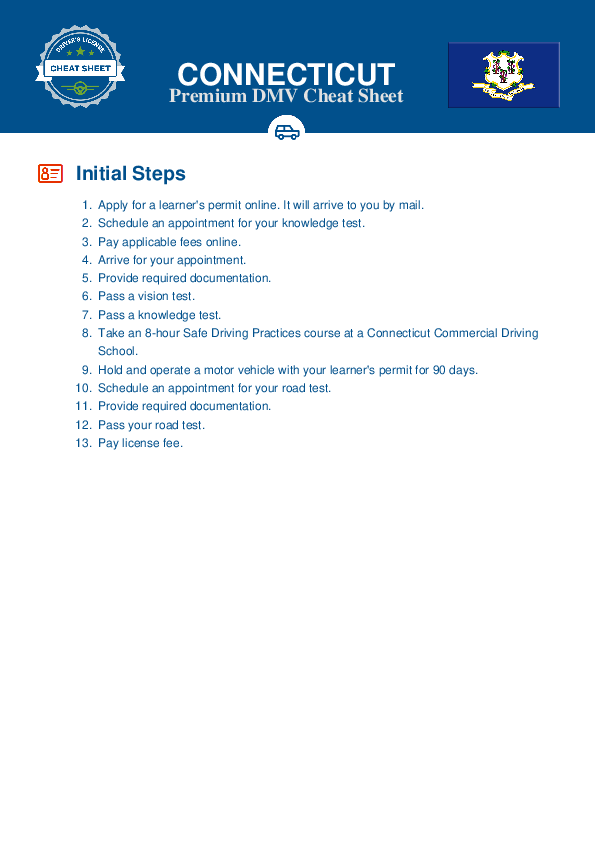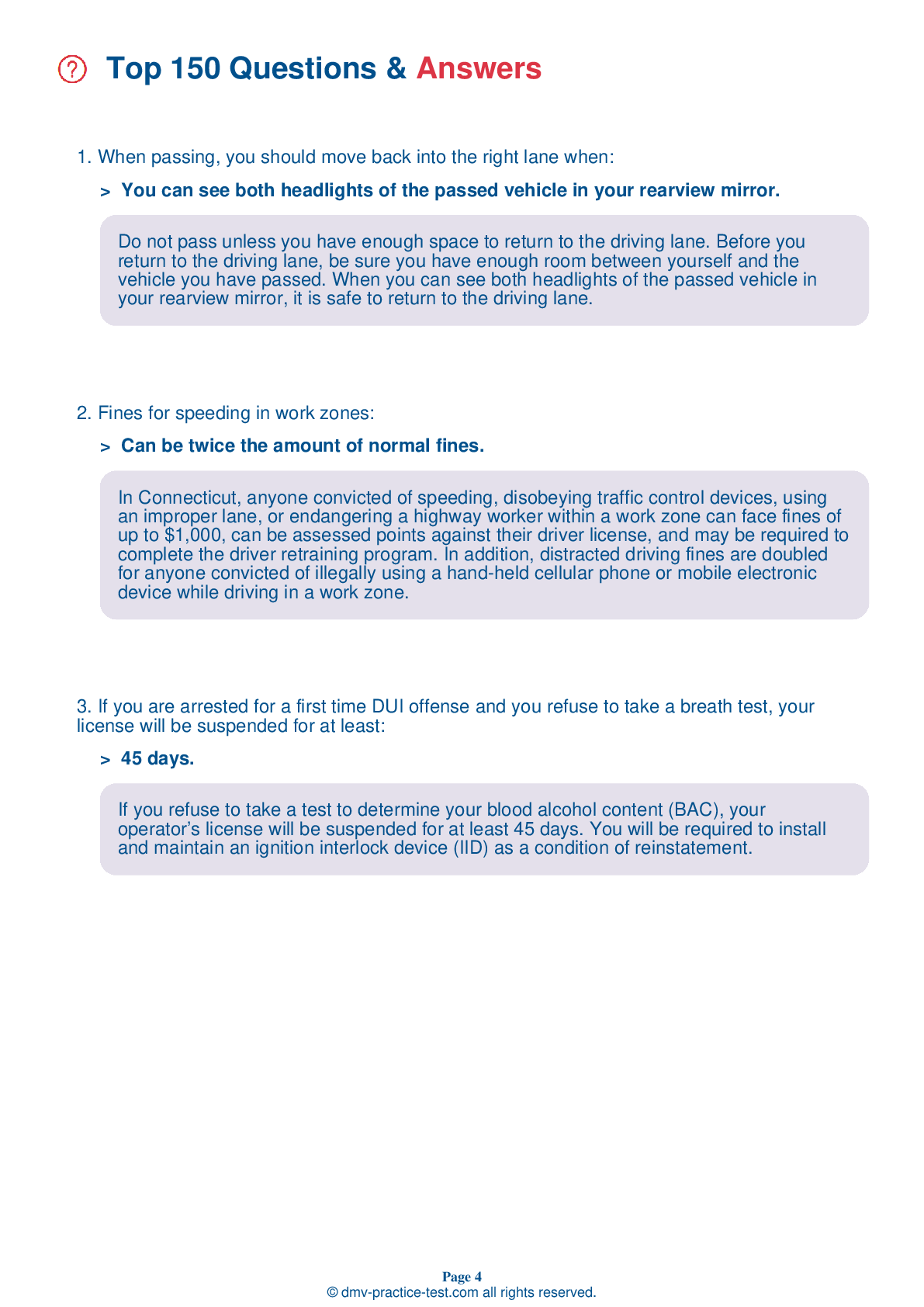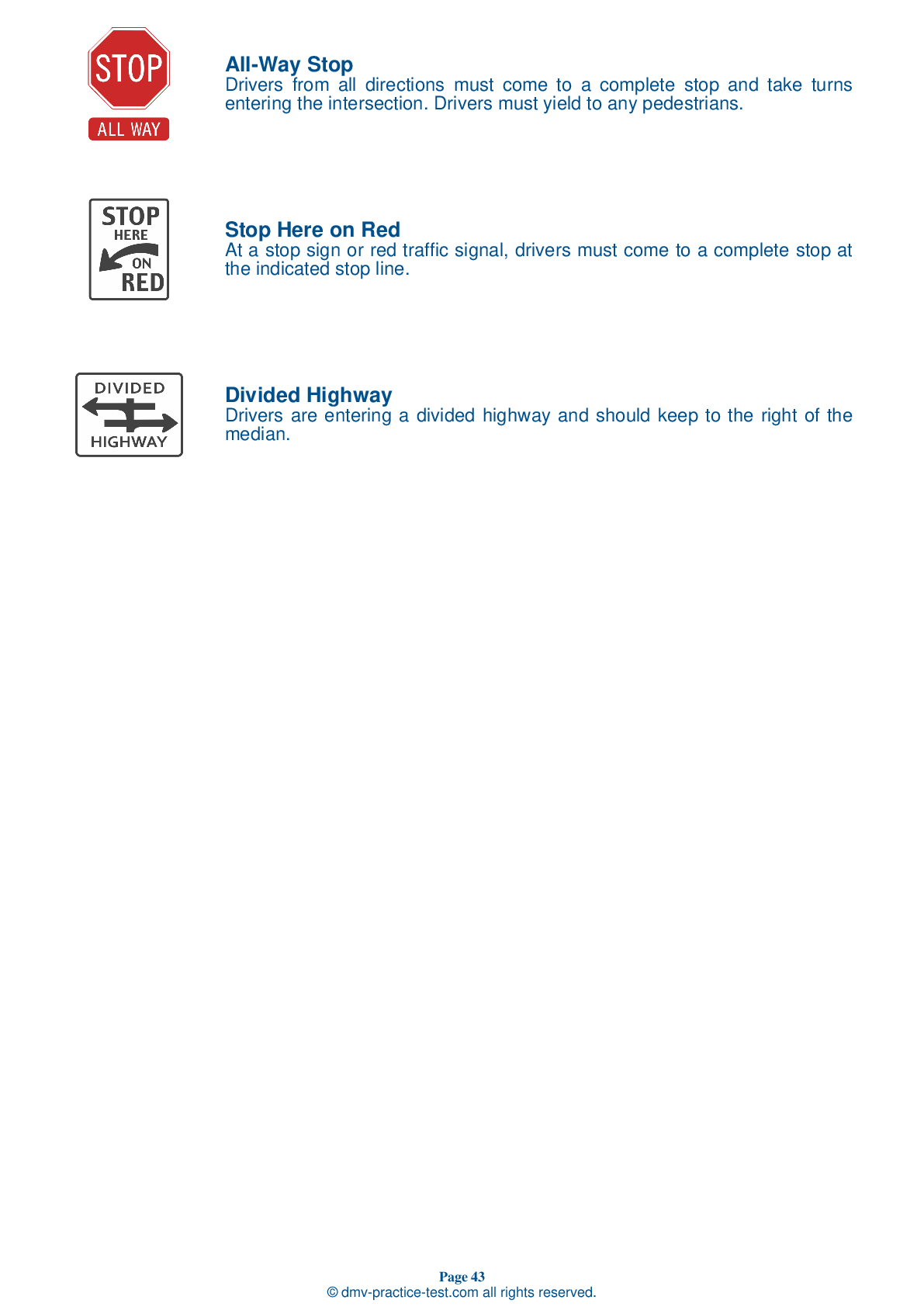FREE Connecticut DMV Practice Test #24 Page 2 of 3
This set of Connecticut DMV practise tests was just updated for January 2025. It includes questions based on the Connecticut Driver Handbook's most essential traffic signs and regulations for 2025. Use actual questions that are very similar (often identical!) to the DMV driving permit test and driver's licence exam to study for the DMV driving permit test and driver's licence exam.
Each practise test question has a hint and explanation to assist you in remembering the concepts. The written component of the official DMV test will include questions about road rules, traffic signs, and driving statutes, as well as information from the Driver Handbook.
To achieve the required passing grade, you must correctly answer 20 of the 25 questions. Take our DMV practise exam to help you prepare for your Connecticut instruction permit or driver's licence.
The DMV exam is available in several languages.
Using any form of testing help will result in an automatic fail, and the DMV may take further action against your driver's licence, so avoid it.
9 . When approaching an intersection with a flashing red light, you must:
A flashing red traffic light means the same thing as a stop sign. When arriving at an intersection with a flashing red light, you must come to a full stop and proceed when it is safe to do so.
10 . Your license can be suspended if you are under 21 and drive with a blood alcohol level of:
There is zero tolerance for alcohol use by drivers under age 21. If you are under 21, the detection of any trace of alcohol in your system will result in stiff penalties, including the suspension of your license for two years.
11 . What does this road sign indicate?
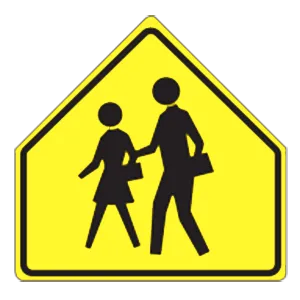
Pentagonal signs indicate that you are in or are approaching a school zone and/or school crossing. Be aware of children when driving near a school zone and follow posted speed limits.
12 . This road sign means:

Warning signs provide notice to road users of a situation that might not be readily apparent and are usually yellow with black markings. This sign warns drivers to be careful when driving under wet conditions as the pavement will become slippery and more difficult to navigate safely.
13 . This sign means:
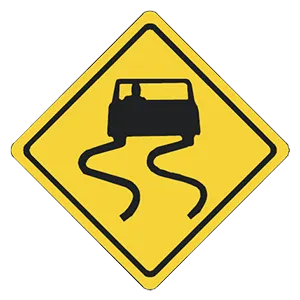
All roads are slippery and dangerous when wet. This sign warns of conditions that can cause a driver to lose control of a car. A driver should slow down when coming upon wet pavement because it takes longer to stop.
14 . This sign is used to warn drivers about:
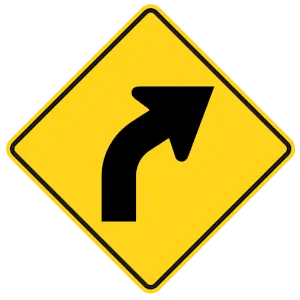
Warning signs are usually yellow with black markings. They alert you to conditions that are immediately ahead. This sign is used to warn drivers about an upcoming curve to the right.
15 . This sign means:
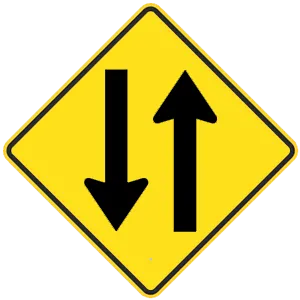
Warning signs are usually yellow with black markings. They alert you to conditions that are immediately ahead. This sign warns that you are leaving a separated one-way highway and will soon be driving on a two-way highway.
16 . "No zones" are areas around trucks where cars:
"No zones" are areas around trucks or buses in which cars disappear into the larger vehicle's blind spots. "No zones" can also be defined as areas in which cars are so close to the larger vehicle that they restrict the truck or bus driver’s ability to stop and maneuver safely. A car being in a "No zone" greatly increases the potential for a crash.
See the exact questions that will be on the 2025 Connecticut DMV exam.
99.2% of people who use the cheat sheet pass the FIRST TIME
LT gives us an insight on how the cheat sheet provided her with all the study questions she needed before taking her test.
Joe initially studied with the handbook and failed his test, he eventually found us online, studied and pass his test the first time around.
